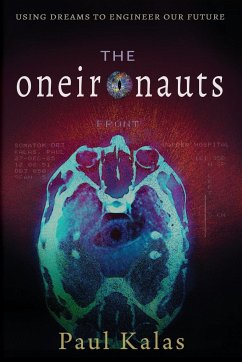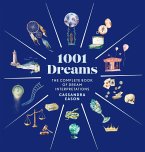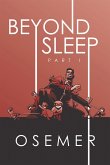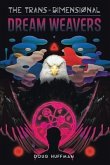Have you ever had a strong feeling of deja vu or witnessed that a dream came true in the future? Are such experiences precognitive or just illusions of the mind? How would a top scientist approach such questions about the paranormal?
The Oneironauts, or "the dream travelers," introduces new scientific evidence that we really do experience possible future events in our dreams.
Author Paul Kalas is the University of California, Berkeley astronomer who captured the first picture of a planet orbiting the nearby star Fomalhaut using the Hubble Space Telescope. This image appeared on the front page of the New York Times and is displayed in the National Air and Space Museum.
In The Oneironauts he reveals for the first time that this pioneering discovery was recorded in his dream diary nine years before it was actually discovered.
In Chapters 1-3, Dr. Kalas relates how prophetic dreams allowed him to both avoid an unpleasant event and affirm a desired goal. He concludes that fate is an illusion, the future can be changed, and both our gut instincts and sense of hope arise from precognitive dreams.
Chapters 4 presents the famous astronomical discovery and precognitive dream in detail, while Chapter 5 analyzes a total of 332 precognitive experiences. Dr. Kalas interprets precognition as a phenomenon related to memory and learning that also influences our personal identity and life path.
Dr. Kalas reviews modern concepts of space and time in Chapters 6 and 7. From physics and astronomy he introduces the reader to relativity, gravitational lensing, the particle-wave duality of light, quantum entanglement, and biophysics. From neuroscience he explains key breakthroughs in our understanding of memory and the perception of spacetime through the study of the hippocampus, sleep and theta rhythm.
In Chapter 8, Dr. Kalas engages the reader with his vision of how precognitive dreaming can improve the lives of individuals and ultimately the future of humanity. What will our society look like in 1,000 years when humans and artificial intelligence have developed reliable methods to recover information from the future?
The Oneironauts will dazzle anyone who has had a precognitive experience or simply wishes to read what a leading scientist predicts about the future. It is beautifully illustrated with 34 original figures and clearly explains modern scientific topics with a touch of humor and references to over 100 writers, poets, artists and scholars.
The Oneironauts, or "the dream travelers," introduces new scientific evidence that we really do experience possible future events in our dreams.
Author Paul Kalas is the University of California, Berkeley astronomer who captured the first picture of a planet orbiting the nearby star Fomalhaut using the Hubble Space Telescope. This image appeared on the front page of the New York Times and is displayed in the National Air and Space Museum.
In The Oneironauts he reveals for the first time that this pioneering discovery was recorded in his dream diary nine years before it was actually discovered.
In Chapters 1-3, Dr. Kalas relates how prophetic dreams allowed him to both avoid an unpleasant event and affirm a desired goal. He concludes that fate is an illusion, the future can be changed, and both our gut instincts and sense of hope arise from precognitive dreams.
Chapters 4 presents the famous astronomical discovery and precognitive dream in detail, while Chapter 5 analyzes a total of 332 precognitive experiences. Dr. Kalas interprets precognition as a phenomenon related to memory and learning that also influences our personal identity and life path.
Dr. Kalas reviews modern concepts of space and time in Chapters 6 and 7. From physics and astronomy he introduces the reader to relativity, gravitational lensing, the particle-wave duality of light, quantum entanglement, and biophysics. From neuroscience he explains key breakthroughs in our understanding of memory and the perception of spacetime through the study of the hippocampus, sleep and theta rhythm.
In Chapter 8, Dr. Kalas engages the reader with his vision of how precognitive dreaming can improve the lives of individuals and ultimately the future of humanity. What will our society look like in 1,000 years when humans and artificial intelligence have developed reliable methods to recover information from the future?
The Oneironauts will dazzle anyone who has had a precognitive experience or simply wishes to read what a leading scientist predicts about the future. It is beautifully illustrated with 34 original figures and clearly explains modern scientific topics with a touch of humor and references to over 100 writers, poets, artists and scholars.
Dieser Download kann aus rechtlichen Gründen nur mit Rechnungsadresse in A, D ausgeliefert werden.









